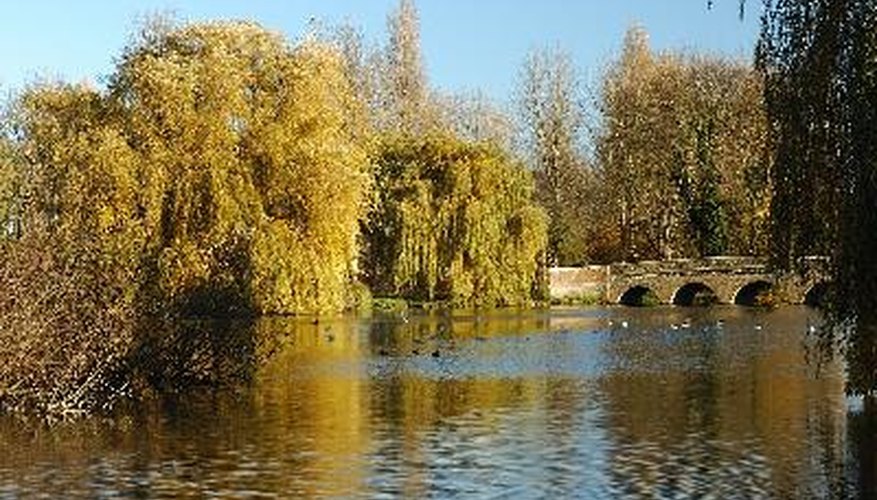Weeping willows are fast-growing trees that thrive in wet conditions but will also grow well in drier soils. The trees have a short lifespan, typically around 30 years. When the trees decline in vitality, they may split, fall or lose limbs. One way to get rid of a fallen willow is to chop it into firewood. Willows are softwood trees that are easy to cut into firewood logs. But like all softwoods, weeping willow does not burn well.
Process of Burning Wood
When wood burns, three things happen. First, any remaining water in the tree evaporates. Second, the tree chemically converts into charcoal, gas and volatile liquids. Third, the charcoal burns, releasing carbon dioxide and carbon monoxide. The composition of wood changes the way in which this can happen. Softwoods such as willow are porous and prone to holding moisture. Hardwoods such as oak or ironwood are dense and contain little moisture.
- When wood burns, three things happen.
- Second, the tree chemically converts into charcoal, gas and volatile liquids.
BTU Rating
The amount of heat a piece of firewood can release into the air is measured in British Thermal Units or BTUs. Softwoods such as willow have low ratings on the BTU scale, while hardwoods such as oak have a higher rating. Softwoods do not produce much heat, partially because they are prone to have more water in their structure. As the water in the wood evaporates, it carries heat away with it. So most of the recoverable heat in a wood such as willow escapes up the chimney with the smoke, vapour and gasses. A seasoned cord of willow has a BTU rating of 17.6. By comparison, a seasoned cord of gamble oak has a BTU rating of 30.7.
- The amount of heat a piece of firewood can release into the air is measured in British Thermal Units or BTUs.
- So most of the recoverable heat in a wood such as willow escapes up the chimney with the smoke, vapour and gasses.
Dangers from Willow
All wood releases creosote, a flammable substance that builds up in a chimney. Softwoods such as willow release more creosote. When burning willow, you must clean the chimney more frequently or the creosote can ignite. Softwoods such as willow may take up to two years or more to properly dry and season. Willows that are not properly seasoned will smoke and smoulder rather than burn and will create more creosote in a chimney.
- All wood releases creosote, a flammable substance that builds up in a chimney.
- Willows that are not properly seasoned will smoke and smoulder rather than burn and will create more creosote in a chimney.
Burning Weeping Willow
Because dry weeping willow will burn like paper, willow can be used to start a fire quickly. The wood will split easily due to its softwood texture. It can be mixed with other woods in a fireplace or used to start a fire that will be maintained with hardwoods.
